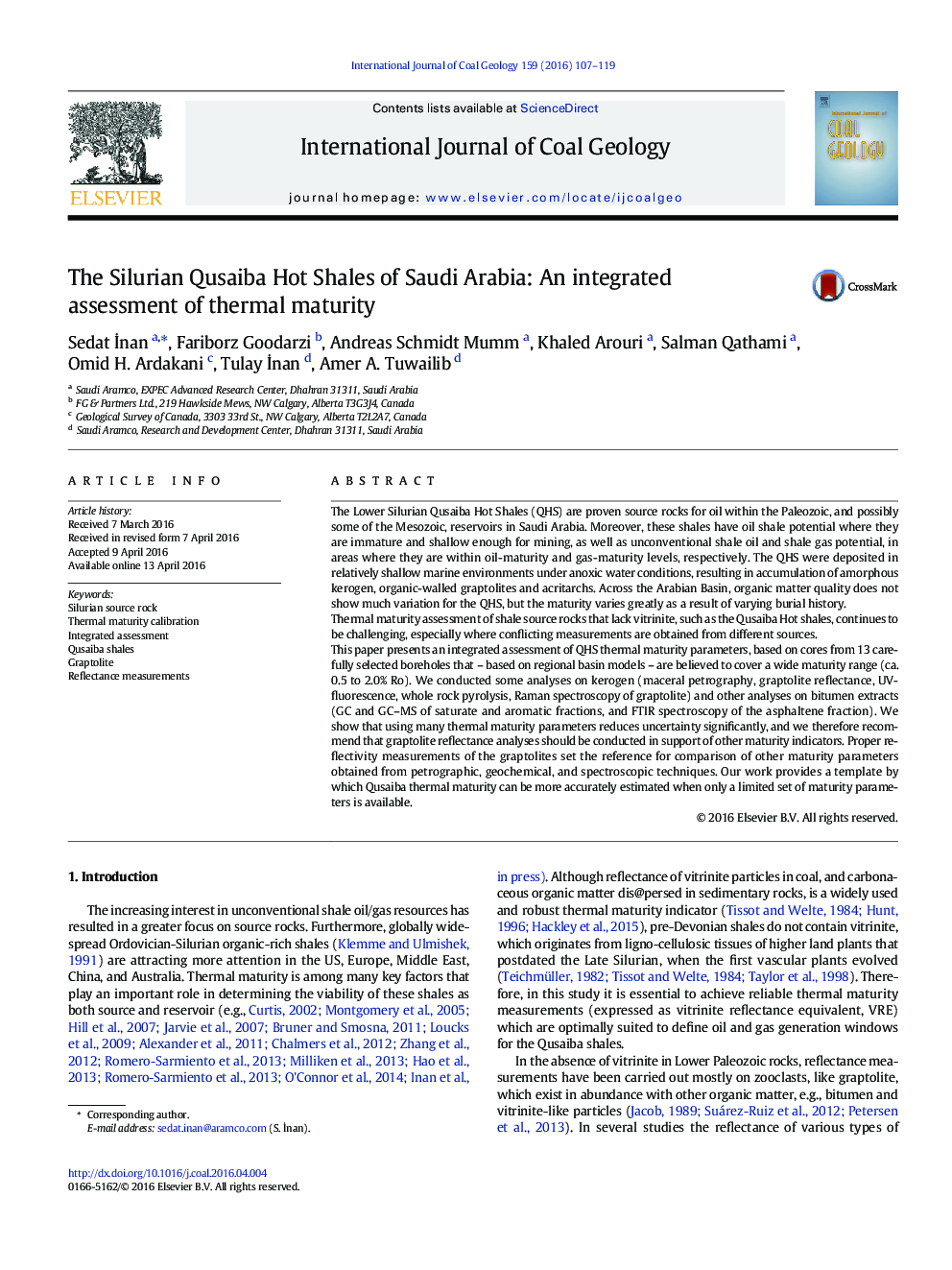| کد مقاله | کد نشریه | سال انتشار | مقاله انگلیسی | نسخه تمام متن |
|---|---|---|---|---|
| 1752808 | 1522543 | 2016 | 13 صفحه PDF | دانلود رایگان |
• Vitrinite reflectance equivalent (VRE) parameter can be reliably estimated from high quality reflectance measurements of graptolite.
• G-D peak separation from Raman spectroscopy shows a good correlation for the whole range of maturity (immature to dry gas generation stage).
• Aromaticity increases based on aromatic carbon distribution in the asphaltene fraction show good correlation with maturity
• Pyrolysis Tmax proved to be useful from immature to dry gas maturity (e.g., 1.8% Ro), equivalent to Tmax 410 to 510 °C.
• MPR (Methylphenanthrene Ratio) is not reliable for low maturity (≤ 0.8% Ro).
The Lower Silurian Qusaiba Hot Shales (QHS) are proven source rocks for oil within the Paleozoic, and possibly some of the Mesozoic, reservoirs in Saudi Arabia. Moreover, these shales have oil shale potential where they are immature and shallow enough for mining, as well as unconventional shale oil and shale gas potential, in areas where they are within oil-maturity and gas-maturity levels, respectively. The QHS were deposited in relatively shallow marine environments under anoxic water conditions, resulting in accumulation of amorphous kerogen, organic-walled graptolites and acritarchs. Across the Arabian Basin, organic matter quality does not show much variation for the QHS, but the maturity varies greatly as a result of varying burial history.Thermal maturity assessment of shale source rocks that lack vitrinite, such as the Qusaiba Hot shales, continues to be challenging, especially where conflicting measurements are obtained from different sources.This paper presents an integrated assessment of QHS thermal maturity parameters, based on cores from 13 carefully selected boreholes that – based on regional basin models – are believed to cover a wide maturity range (ca. 0.5 to 2.0% Ro). We conducted some analyses on kerogen (maceral petrography, graptolite reflectance, UV-fluorescence, whole rock pyrolysis, Raman spectroscopy of graptolite) and other analyses on bitumen extracts (GC and GC–MS of saturate and aromatic fractions, and FTIR spectroscopy of the asphaltene fraction). We show that using many thermal maturity parameters reduces uncertainty significantly, and we therefore recommend that graptolite reflectance analyses should be conducted in support of other maturity indicators. Proper reflectivity measurements of the graptolites set the reference for comparison of other maturity parameters obtained from petrographic, geochemical, and spectroscopic techniques. Our work provides a template by which Qusaiba thermal maturity can be more accurately estimated when only a limited set of maturity parameters is available.
Journal: International Journal of Coal Geology - Volume 159, 1 April 2016, Pages 107–119
